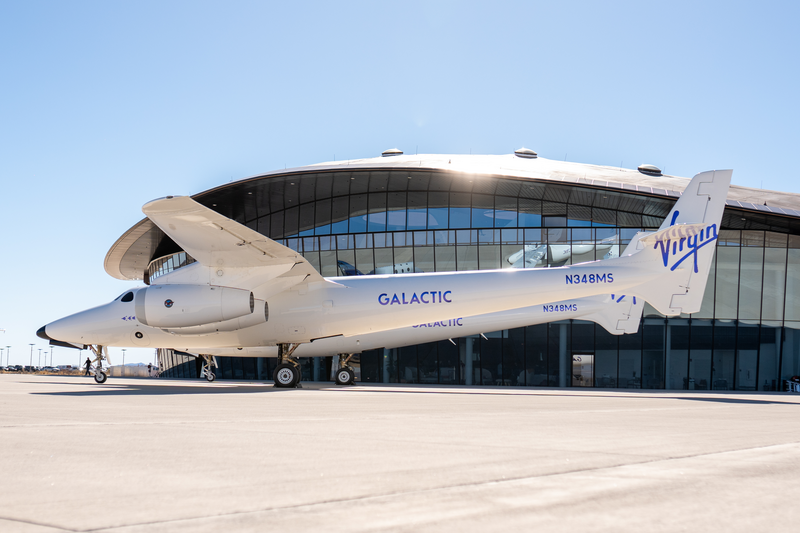Virgin Galactic, the bold brainchild of Sir Richard Branson, has launched itself firmly into the cosmos of space tourism, ushering in a new era of suborbital exploration for civilians. With its recent successful journey to the edge of space, the company, born in 2004, has proven that it is possible to cross the final frontier, not just for astronauts, but also for those who can afford the steep ticket price.
A Journey Beyond Earth’s Boundaries
On Thursday, the Virgin Galactic rocket plane, Unity, soared to an altitude of approximately 53 miles (about 85 kilometres), officially marking the company’s foray into the competitive space tourism sector. Aboard the Unity were two Italian air force colonels, an aerospace engineer from Italy’s National Research Council, a Virgin Galactic instructor, and the plane’s two pilots. Their suborbital journey, lasting 90 minutes, was live-streamed to audiences around the world.
Reaching the apex of the flight, the crew experienced a few precious minutes of weightlessness. They took the opportunity to unfurl an Italian flag before the craft manoeuvred into re-entry mode and glided smoothly back to the runway at Spaceport America, near El Paso, Texas.
A Resounding Success Amidst Historic Challenges
This flight has been an unequivocal victory for Virgin Galactic, especially considering the challenges the company faced over the years. In 2014, a tragic crash resulted in the loss of a pilot and sent shockwaves through the burgeoning industry. Virgin Orbit, Branson’s satellite launch firm, announced its closure in May 2023, following a failed rocket launch. However, with the Unity’s successful mission, Virgin Galactic’s fortune seems to have taken a positive turn.
More from News
- Rentr Partners With Factored to Offer UK Landlords Instant Access to Rent Advancements For Property Upgrades and Maintenance
- What Caused The Starlink Global Outage?
- Figma’s AI App Building Tool, Figma Make, Now Available For Use
- Tells.co Shaking Up SMS Marketing: How Founders David Schlaegel and Justin Ramsey Are Doing It
- Google Launches AI Tool That Helps Shoppers Pick And Try Clothing
- Are UK Shoppers Comfortable With AI In Retail?
- How Many Prompts Does ChatGPT Actually Receive?
- First-Ever Trade Mission To South Africa for Sadiq Khan, Mayor of London
A Game-Changer for Science
While space tourism is an exciting prospect in itself, the Italian team’s mission served dual purposes, both touristic and scientific. The astronauts carried out a series of tests, including a specially suited astronaut who measured biometric data and physiological responses to microgravity, another monitored heart rate, brain function, and other metrics, and the third examined how solids and liquids interact in a weightless environment.
This novel approach demonstrates how space tourism could significantly impact scientific research, allowing scientists to gather vital data in microgravity conditions directly.
The Financial Implications of Galactic Tourism
Virgin Galactic’s venture into space tourism isn’t for the faint-hearted, especially when it comes to finances. Approximately 800 tickets have been sold for these out-of-this-world experiences, with prices reaching up to £338,000 per seat, a sum only a select few can afford.
This development occurs amidst a time when space tourism is becoming increasingly attractive for billionaires and their adventurous clientele. Recent tragic events, such as the loss of the Titan submersible, have highlighted the risks involved in these expeditions, emphasising the inherent danger in this pursuit of ultimate thrills.
The Future of Space Tourism
Despite the evident risks, the potential for space tourism is vast and exciting. Virgin Galactic’s successful flight marks a decisive moment in the history of space exploration and tourism. The company, along with other billionaire-founded ventures like Jeff Bezos’s Blue Origin and Elon Musk’s SpaceX, is set to reshape the landscape of space exploration, pushing the boundaries of human endeavour.
In the wake of Virgin Galactic’s successful mission, the prospect of space tourism has never seemed closer. Despite the dangers and immense challenges, companies like Virgin Galactic are pushing the boundaries of what’s possible and giving us a glimpse of a future where space travel is within reach of many more individuals. We are, indeed, living in exciting times.

